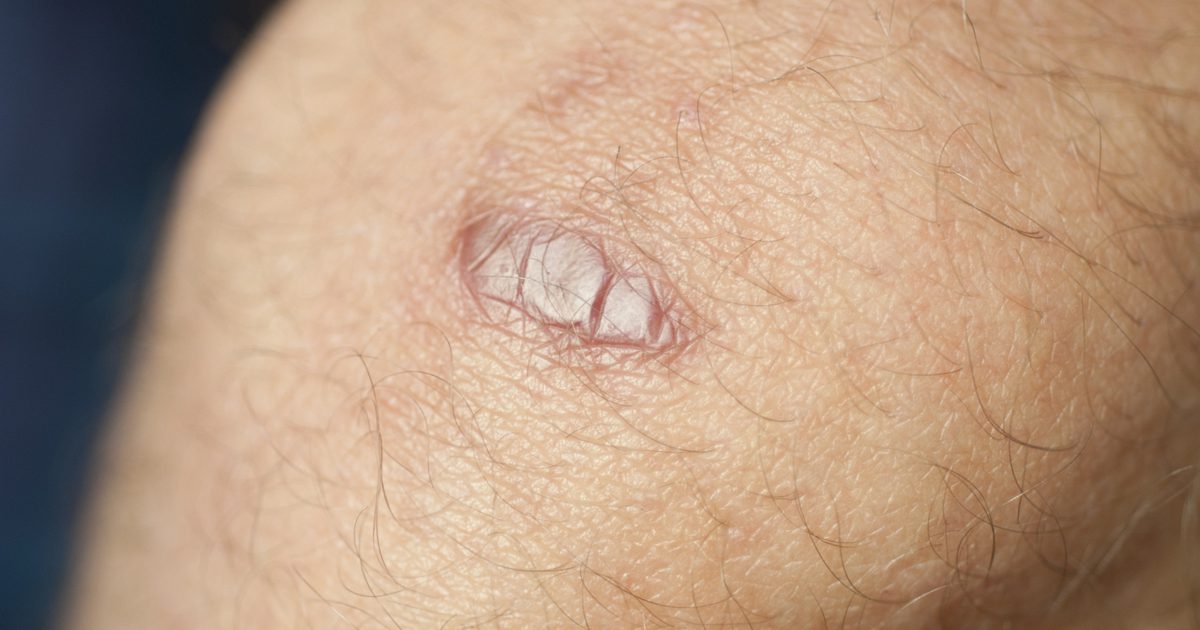Risk Factors And Complications Of Pyoderma Gangrenosum
Pyoderma gangrenosum is a rare medical condition that causes the development of painful sores, which most often appear on the legs. Though the exact cause is unknown, the disorder seems to be linked to the immune system. Some underlying conditions can increase a person's risk of developing pyoderma gangrenosum. The ulcers usually clear up when they're treated, but they can leave behind scars, and it's also common for the ulcers to recur. The condition can occur at any age, though it more commonly affects individuals between twenty and fifty years old. Patients with pyoderma gangrenosum should try to avoid causing injury to their skin, as skin trauma can provoke the development of new ulcers.
Get familiar with the range of risk factors and complications associated with pyoderma gangrenosum now.
Rheumatoid Arthritis

More than fifty percent of patients with pyoderma gangrenosum have a systemic disease like rheumatoid arthritis, a chronic disorder that causes joint inflammation. Other systems in the body can become damaged as well, including the blood vessels, heart, lungs, eyes, and skin. Rheumatoid arthritis is an autoimmune disorder that starts when the immune system attacks tissues in the body. While osteoarthritis is caused by worn-down damage to the joints, rheumatoid arthritis causes the lining of the joints to become inflamed, leading to swelling that can, over time, cause deformity of the joint and erosion of bone. Symptoms include swollen joints, tender joints, joint stiffness that's worse after inactivity or in the mornings, fatigue, and fever.
Learn more about the risk factors and complications of pyoderma gangrenosum now.
Acute Myelogenous Leukemia

There are three main blood cells in the body: red , white, and platelets. Red blood cells are responsible for carrying oxygen to the tissues throughout the body. They also move carbon dioxide to the lungs so it can be expelled. Platelets are fragments of cells that help blood clot. White blood cells are responsible for fighting infections in the body. Leukemias begin in cells that usually develop into blood cells, and the most common form of leukemia begins in the early white blood cells. While acute myelogenous leukemia starts in the bone marrow, it will often move into the blood itself. The disease can also spread to other systems in the body. When pyoderma gangrenosum and acute myelogenous leukemia are connected, it unfortunately often indicates a poor patient prognosis.
Keep reading to reveal more complications and risk factors of pyoderma gangrenosum.
Inflammatory Bowel Conditions

Patients with inflammatory bowel conditions, including Crohn's disease and ulcerative colitis, may be at a higher risk of developing pyoderma gangrenosum. Ulcerative colitis leads to chronic inflammation along with ulcers in the inner lining of the rectum and colon. Crohn's disease leads to inflammation in the digestive tract's lining, which can spread deeply into the tissues of the digestive tract. Both of these conditions tend to involve pain in the abdomen, weight loss, fatigue, and severe diarrhea. Doctors don't currently know what causes inflammatory bowel conditions. One theory is it's caused by a malfunction of the immune system. This may be why inflammatory bowel conditions and pyoderma gangrenosum have such a high rate of comorbidity, since the latter is also theorized to be caused by a malfunction of the immune system.
Discover more details about the risk factors and complications of pyoderma gangrenosum now.
Loss Of Mobility

The loss of mobility is a possible complication associated with pyoderma gangrenosum. When there are painful ulcers on the legs, it naturally becomes harder for a patient to move. One study involved a ninety-four-year-old man whose mobility was affected by the painful ulcers on his legs. It's important for patients to talk to a doctor if their ulcers are causing too much pain for normal mobility. The condition will often be treated with corticosteroids. These drugs mimic the hormone cortisol, which is created by the adrenal gland. They suppress the immune system. Since pyoderam gangrenosum is theorized to be caused by an overreaction of the immune system, corticosteroids help reduce the prevalence of ulcers. In addition, patients experiencing significant pain can sometimes benefit from prescribed pain medications.
Uncover more information regarding the risk factors and complications of pyoderma gangrenosum now.
Scarring

Pyoderma gangrenosum can lead to scarring, the most common type being cribriform mutilating. Some experts have described this type of scarring as the skin looking like 'cigarette paper.' The scars can cause significant disfigurement, especially because of the size of the ulcers. If multiple ulcers were located close together, the scars may cover a large patch of skin. Different types of scars have different potential treatments. Keloid scars occur because the healing process for the ulcers was overly aggressive, and they can extend further than the original injury. Experts treat these scars through silicone sheets that flatten the tissue, or steroid injections. In severe cases, such as cases that cause impairment of an individual's movement, a doctor may recommend removing the scar surgically.
